Inventory management software is essential for building a system for tracking and controlling your inventory, particularly as your company grows. The following is a rundown of how inventory management software works.
- Inventory management software gives you full visibility over your entire stock, allowing you to keep the right amount of each item on hand to keep fulfilling orders without having too much on hand.
- Inventory management software automates important activities and decreases the risk of human mistakes, especially when it’s integrated with other important systems like accounting software and point-of-sale systems.
Why Inventory Management is becoming important for business?
There are many reasons why inventory management is important for small businesses to large businesses. Inventory control may make or break a company. On a balance sheet, inventory is frequently the largest item in the current assets category.
Inventory problems can lead to business losses and even failure. On the other hand, effective supply chain management can help a company grow. Effective Inventory management is about striking a balance between the amount of inventory coming in and the amount of inventory leaving.
It manages the time and expenses of non-capitalized assets and inventory, allowing a company to achieve maximum profit.
Best Ways to buy Inventory Management System in 2022:
It’s hard how to decide which inventory system works best for our company and make the system as effective and efficient as possible. Here is a guide for you to decide on an effective Inventory management system for your company.
Features to look at in an Inventory Management System:
Here are some features to look at before buying an Inventory Management System.
Tracking of Inventory:
This is the most important and fundamental requirement for inventory management software.
Your program should show you exactly what you have and where it is, as well as reflect any stock moves or allocations that occur in your organization in real-time. That is to say:
- Your stock position is updated with sales orders. So you don’t sell the same product twice or sell merchandise you won’t be able to deliver.
- As soon as inbound products are scanned at the warehouse, they are reflected in your inventory management software.
- Real-time warehouse moves are shown.
Inventory Value:
While warehouse managers and operations are concerned with what goods they have and where it is located, the finance team is concerned with how much it is worth.
As a result, any accounting software you employ should be updated in real-time by a robust inventory management system. As a result, you’ll wish to
- Accurate inventory values that take into account price and volume differences in your transactions.
- Inventory value by warehouse, region, and country in real-time.
- If you buy and/or sell in different countries, you’ll need multi-currency support.
Low stock alerts:
As a result, your inventory management software must include the option to establish automatic alerts when critical stock is running low, as well as the capacity to swiftly produce a purchase order in response to that warning.
Purchase Management:
Having proper inventory management software allows you to obtain control over your purchasing, which is critical to business efficiency. Naturally, knowing exactly what you have, how much it’s worth, and where it puts you in a far better position to buy more (or not buy more needlessly, as the case may be).
However, you must avoid wasting time – and making mistakes – manually integrating inventory data into your purchasing process or continually copying and pasting supplier information.
The best inventory management software will allow you to do the following:
- Create and fill purchase orders automatically.
- All of your supplier information should be kept in one place.
- To make optimal purchasing easier, dynamically produce whatever quantity reductions your suppliers give you.
- View the history of your transactions with each supplier.
- If things arrive in dribs and drabs, partially accept a purchase order.
Reporting of Inventory:
It’s pointless to invest in expensive inventory management software if you have to manually extract all of your data every month. After all, the goal of every software system is to reduce administrative overhead and increase the efficiency of large-scale operations.
Look for built-in reporting options that can provide information such as:
- How quickly does your merchandise change hands?
- For each SKU, the average number of days it takes to sell
- You have a high backorder rate.
- Margins on unit sales based on stock age
Management of Bills of material:
Bills of material are recipes that specify the exact proportions of components that go into making a finished product. If your inventory management software can also manage your Bills of Materials, the process of ordering the proper components in the right quantities for a planned manufacturing run becomes much easier.
The best inventory management software will automatically fill purchase orders from your bill of materials, taking into consideration the stock on hand to complete the run. For more complex completed items, it should also allow you to nest many tiers of Bills of Materials and track the value of any production waste.
Serial no tracking:
If you manage a lot of high-value, highly specialized componentry, serial number monitoring is a must. Consider how you buy a new printer toner by serial number according to the unique make and model of your printer if after-sales service is a key element of your business.
Barcode scanning:
Electronic tracking of goods in and out is common inefficient warehouses, with barcode scanning being the most usual method. Barcode readers are commonly used for the following tasks:
- Taking Purchase Orders in.
- Stocks are counted.
- Shipments of sales.
- As a result, make sure your inventory management software can read 1D barcodes and create barcodes for printable labels.
Here is a list of Top Inventory Management Systems:
To make it easier for you to buy an effective inventory management system. Here is a list of top inventory management systems. Have a look and decide for your business.
Inflow Inventory:
InFlow is inventory management software developed for item-based businesses to track items, manage orders, generate invoices, curate reports, and handle other trade and transaction procedures. It has the perfect blend of a simple, intuitive UI and omnipresent support services.
Zoho Inventory:
Zoho Inventory is one of the top inventory management software solutions for businesses, allowing them to manage inventory, purchase orders, sales orders, and shipments more efficiently.
Sellbrite:
Sellbrite is one of the most well-known inventory management systems for businesses. This user-friendly platform provides enterprise-level inventory management capabilities and aids in the establishment of a balance between stock, sales, and purchase orders.
TradeGecko:
TradeGecko is one of the best inventory management tools for small businesses. This versatile inventory management software is designed to help high-growth eCommerce and multichannel businesses succeed.
Stitch Labs:
With its integrated advanced capabilities, a multi-channel inventory system like Stitch Labs is not only a lifesaver but also manages a lot of business epidemics.
LightSpeed POS:
Lightspeed POS is more than simply inventory management software; it’s also a platform for keeping track of your consumers. With a POS solution, you may get a customer’s profile, purchase history, and categories.
Conclusion:
The inventory management system is not only important for big businesses but for small businesses as well. Use this guide to benefit your business by buying a good Inventory management system in 2022.
FAQS:
What are the qualities of a good inventory management system?
An easy-to-use interface that doesn’t require advanced training, support, or documentation is among the system’s criteria. Automation for inventory management business functions to eliminate manual processes. A secure database that gives accurate, real-time information.
What are the uses of an Inventory management system?
An inventory management system is a tool for tracking products across your company’s supply chain. It maps the whole journey of a product from the order placing with your vendor through order delivery to your consumer, optimizing the entire spectrum.
What are the perks and benefits of an Inventory Management System?
These are some benefits of an Inventory Management System:
- Inventory order accuracy has improved. Good inventory management necessitates accuracy in product orders, status, and tracking.
- The warehouse is well-organized.
- Increased Productivity and Efficiency
- You will save both time and money.
- Customers who return.
How can Inventory help business?
By lowering the possibilities of being sold out of an item when a consumer wants to buy it, an inventory management system can help you improve sales. You’re less likely to run out of popular products if you have a better grasp of stock levels and how much you’re going to sell.

